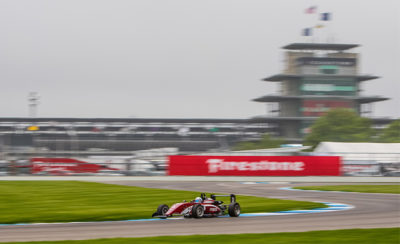When heading to a new track for the first time, the Mazda factory drivers say it’s important to do your homework
Going to a new track for the first time can be intimidating. Not only do you have a limited amount of time to get the feel of the track, learn your braking points and figure out just how much speed you can carry through each corner, you also have to determine how it’s going to race – where are the good passing zones and which corners you have to maximize. Plus, a lot of the drivers you’ll be racing against already know that stuff – they can spend their time fine-tuning and dialing in the car.
Fortunately, there are a lot of ways to get a good chunk of your learning done before you arrive. Thanks to the Internet, online video and sim racing, it’s possible to get a feel for the track, approximate brake zones and have a pretty good idea of the line well in advance.
“I think it’s about doing your homework before you get there,” says Tom Long, driver of the No. 70 Castrol EDGE Mazda RT24-P in the IMSA WeatherTech SportsCar Championship and a driving coach. “Nowadays, there’s so much good information out there from the Internet, videos to data and even coaches who put their perspective on things online – you can read track notes and things like that. There’s this whole other side now with iRacing, and you can really get tuned into a circuit with a multitude of different cars, depending on what you’re driving, with that kind of tool.”
Once you’re at the track and, if possible, you’ve taken a walk around the circuit (more on that topic in the near future), when you get into your practice sessions, you’ll want to take a methodical approach to figuring out the limits.
“Don’t try to be the fast guy at the end of the first session, because it’s new to you, and there are guys who have raced at the track before,” explains Joel Miller, Long’s partner in the No. 70 and mentor for the Mazda Road to Indy drivers. “It’s all about trying to peak when it counts. In that case, qualifying, right? So set a realistic goal for that first session. I see so many times, people go out five laps and say, ‘We need to make a car change.’ Well, do you need to make a car change, or do you need to drive more? If you have an hour session, you need to run 20 percent of that hour without coming in, just work on yourself, just try different things on the racetrack. The only way you’re going to figure the track out in the first session is run laps. Look internally first, and build from there.”
Because you’ve done your homework, getting to know the track won’t take long. Meanwhile, the key to discovering the limits in braking and cornering is to take small swipes at it. Too big and you’re going to make a mistake that’s going to haunt your mind every time you approach that corner. “You don’t want to overdrive initially, because that sets you back longer,” says Jonathan Bomarito, driver of the No. 55 RT24-P in IMSA. “If you’re a little bit on the conservative side, you can work your braking points down methodically. It’s a much better approach than overdoing it.”
Adds his co-driver, Tristan Nuñez: “Work your way up slowly; move your braking points in little by little. Take little bites. Don’t take one big bite and throw it off the track – you’ll lose your confidence. It doesn’t matter how much of a badass you are, it’s going to put something in the back of your head the next time you go into that corner.”
Do your homework and take a methodical approach in practice, and you should be up to speed when it counts.


 ACCESSIBILITY
ACCESSIBILITY